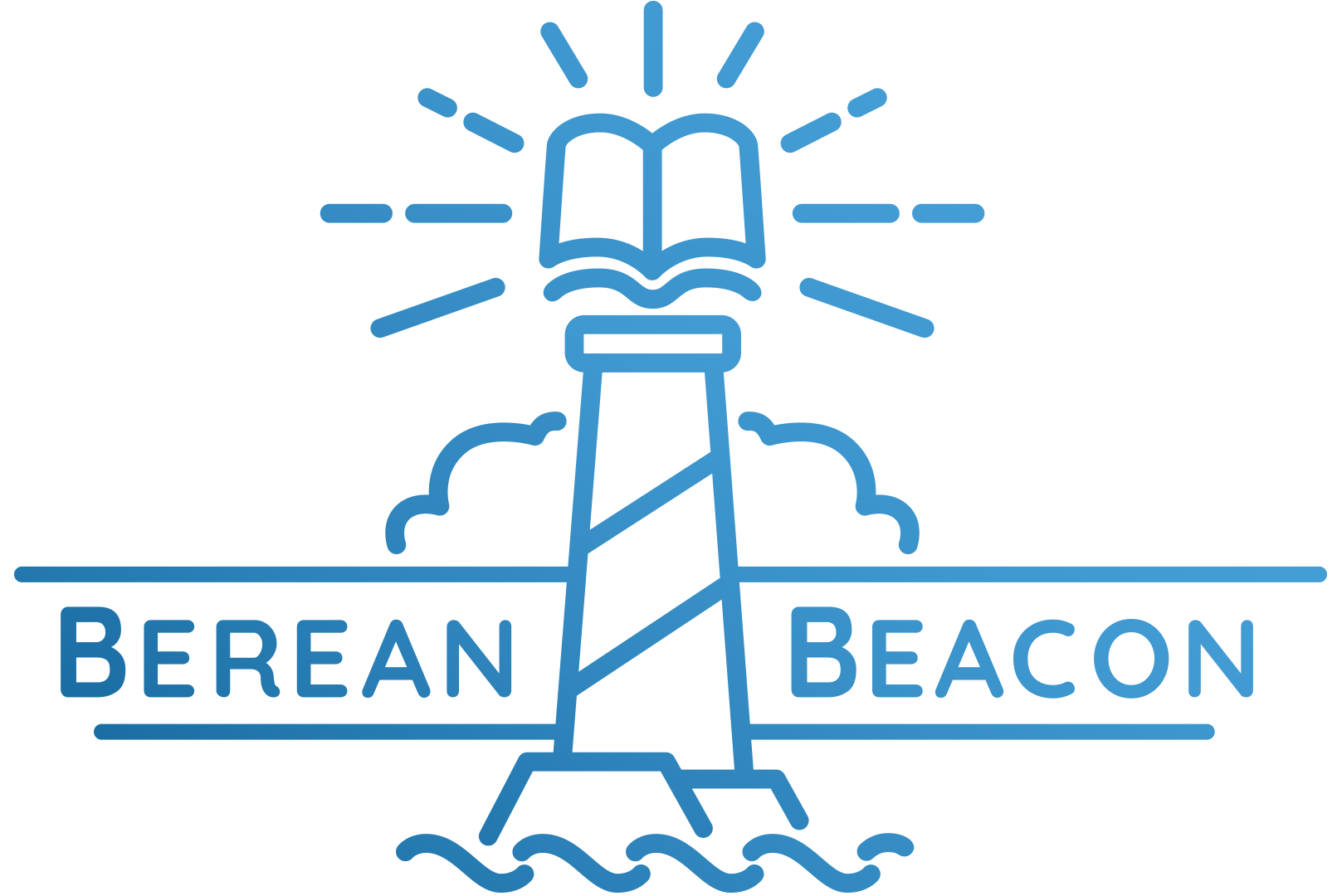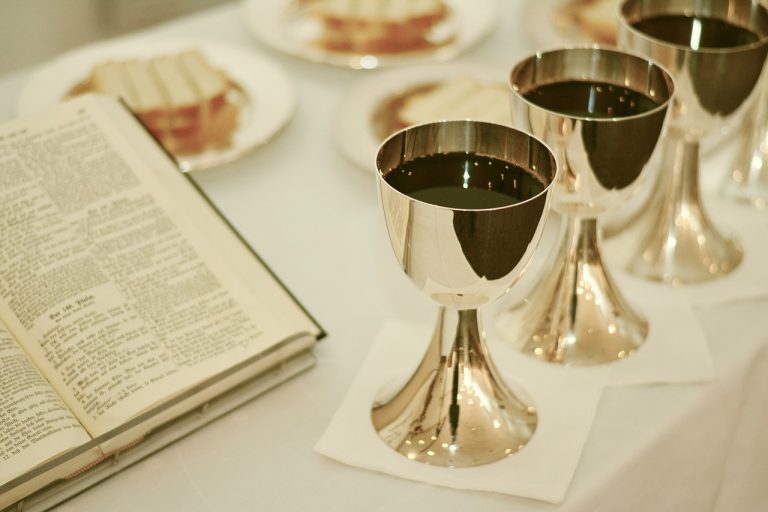The Orthodox Eucharist Is Not the Lord’s Supper
Note from Berean Beacon: This article is adapted from the book: Eastern Orthodoxy Illuminatedby the Scriptures (Curent: Belgrade, 2009), written by Serbian author, Ivica Stamenkovic. His research is based upon Holy Scripture, as well as primary Orthodox sources. Future articles will further examine in detail other Eastern Orthodox teachings on salvation.
Jesus Christ commanded His followers to observe the Lord’s Supper as a symbolic remembrance of His life and sacrifice on behalf of humankind’s sins. Thus precisely He said, “take, eat: this is my body, which is broken for you.”1Theexact Greek verb that the Lord used clearly indicatedjust a comparison of the bread to His body simply a metaphor as we will see later.2 However Eastern Orthodoxy and Roman Catholicism go further and believe that the bread is the literal body of Jesus Christ and the wine is the literal blood of Jesus Christ. Furthermore, Eastern Orthodoxy claims that anyone who partakes the bread and the wine receives eternal life and salvation through the physical Eucharist. Two Orthodox theologians explain,
“May Christ live forever in the Orthodox Christian Church! The high priestly ministry of the redemption of Jesus Christ continues without interruption. … During every HolyLiturgy, the priest offers the consecrated bread (the Holy Lamb of God) and wine, which become the righteous Body and Blood of Christ, the Savior. This faith that the bread and wine are transformed into the Body and Blood of the Lord comprise the entire foundation of the Orthodox Church.”3
“The Mystery of the Holy Eucharist is performed on a daily basis in the sacramental sacrifices in Orthodox temples. Christ did this to enable us to have spiritual union withhim in the Sacrament of the Eucharist… The Holy Eucharist is the greatest treasure a Christian can possess… The Holy Eucharist gives spiritual rebirth to a person. This isthe experience for Christian saints.”4
This paper will demonstrate that what Eastern Orthodoxy teaches in its sacrament of the “Holy Eucharist” is not in accord with Christ’s own teaching on the Lord’s Supper. Jesus Christ revealed the meaning of the Old Testament Passover as concerning His atonement for His people’s sins. The Bible shows that a true believer, who is already in fellowship with Christ through His one-time atoning death on the cross, simply celebrates this existing reality. Partaking of the Lord’s Supper does not endow a believer with “spiritual rebirth.” A true believer has already been born again.
Furthermore, the evidence of Holy Scripture and church history teaches us that the teaching of “transubstantiation”5 was introduced in the Church many centuries after Christ’s apostles died. Eastern Orthodoxy presumes that the first disciples did not understand Christ’s word. This presupposition in fact comprises the very foundation of the Orthodox Church.
The Bible Teaching on the Lord’s Supper
We read the explanation of the Lord’s Supper in the gospel of Luke,
“And when the hour was come, he sat down, and the twelve apostles with him. And he said unto them, With desire I have desired to eat this Passover with you before I suffer: For I say unto you, I will not any more eat thereof, until it be fulfilled in the kingdom of God. And he took the cup, and gave thanks, and said, Take this, and divide it among yourselves: For I say unto you, I will not drink of the fruit of the vine, until the kingdom of God shall come. And he took bread, and gave thanks, and brake it, and gave unto them, saying, This is my body which is given for you: this do in remembrance of me. Likewise also the cup after supper, saying, This cup is the new testament in my blood, which is shed for you.”6
Jesus Christ was teaching during the last Passover supper. It is critical to remember that He was speaking using a metaphor, which is a figure of speech. It is similar to how He taught on other occasions: “I am the door,”7 “I am the good shepherd,”8 “I am the way,”9 “I am the true vine,”10“I am the light of the world.” 11
The Scripture teaches six things about the Last Supper.
- This event took place on the eve of Jesus Christ’s arrest.
- In addition to other foods prepared for the Passover feast unleavened bread and wine were placed on the table for the Lord and His disciples.
- Christ compared the bread to His body: “This is my body.”
- Christ took the cup of wine and said, “This is my new covenant with you in My blood, which will be shed for you.”
- Christ commanded His disciples to keep this ordinance regularly and repeatedly, in remembrance of Him, that is, His sacrifice on Calvary.
- Christ affirmed that the cup is “the fruit of the vine”, that is, wine.
Nowhere does Christ teach the transformation of the bread and wine into His physical body and blood, nor does He command His disciples in the future to make such “transformation”.
The Apostle Paul has the same teaching of Christ regarding the Lord’s Supper. He wrote,
“For I have received of the Lord that which also I delivered unto you, that the Lord Jesus the same night in which he was betrayed took bread: And when he had given thanks, he brake it, and said, Take, eat: this is my body, which is broken for you: this do inremembrance of me. After the same manner also he took the cup, when he had supped,saying, this cup is the new testament in my blood: this do ye, as oft as ye drink it, inremembrance of me. For as often as ye eat this bread, and drink this cup, ye do shew the Lord’s death till he come.”12
The Apostle Paul reiterates many of Christ’s teachings. He also declares in the context of who can participate; i.e., believers who already have been born again and why; i.e., to remember the atoning death of Christ and His future return for believers. By eating the bread and taking the wine, believers in Christ celebrate the Lord’s death. This means that Christians testify both to believers and unbelievers of their faith in the redemptive work of Christ for their salvation. Again, the Apostle Paul does not teach that the bread literally becomes Christ’s flesh or the cup become Christ’s blood.
Jesus Christ’s Teaching about Spiritual Feeding in John 6
One text frequently used by Orthodox to defend the bread and wine turning into the literal flesh and blood of Christ is John 6. The verses usually used are the following,
“Then Jesus said unto them, Verily, verily, I say unto you, Except ye eat the flesh of the Son of man, and drink his blood, ye have no life in you. Whoso eateth my flesh, and drinketh my blood, hath eternal life; and I will raise him up at the last day. For my flesh is meat indeed, and my blood is drink indeed. He that eateth my flesh, and drinketh my blood, dwelleth in me, and I in him. As the living Father hath sent me, and I live by the Father: so he that eateth me, even he shall live by me. This is that bread which came down from heaven: notas your fathers did eat manna, and are dead: he that eateth of this bread shall liveforever.”13
If understood literally, rather than figuratively, this statement would sound truly repulsive and shocking. A literal interpretation of the words of Jesus would compare Him with the worst kind of pagan worship in which the participants drank the blood of their victims and thus considered themselves to have received the life of another person. However, Christ never could have commanded His listeners to eat His literal body and drink His literal blood in order to gain eternal life, although many of those who heard Him had such an interpretation.
Nevertheless, the Lord spoke this entire message with gravity. It was intended to demonstrate that His disciples implicitly believed in His words, even if they could not understand them fully at the time, or even if other listeners did not trust in Jesus as the Christ. Of course, the message was more than clear to those who were seeking spiritual truth. What happened next was a perfectly logical outcome. Thus the account continues,
“Many therefore of his disciples, when they had heard this, said, this is an hard saying; who can hear it? … From that time many of his disciples went back, and walked no more with him.”14
The key to understanding this dialogue with Christ is the correct spiritual application of His metaphors for His body as “real food” and His blood as “real drink”. The Lord explained just how His words were to be understood;
“This is that bread which came down from heaven: not as your fathers did eat manna, and are dead: he that eateth of this bread shall live forever… It is the spirit that quickeneth; the flesh profiteth nothing: the words that I speak unto you, they are spirit, and they arelife.”15
The doctrine of Christ Jesus’ body and blood being literally in bread and wine, profits nothing, but rather leads a person into a most serious mistake. In contrast to Jesus Christ’s clarity of His explanation of how His words are “spirit and life,” Orthodoxy still alleges that Christ taught transubstantiation. There are two problems with such an interpretation,
- Orthodoxy believes the literal interpretation of John 6 faces a serious dilemma. If both the ‘eating and drinking’ and ‘believing in Jesus’ produce the same result, i.e. eternal life, what if a person ‘believes’ but does not ‘eat or drink? Or what if a person ‘eats and drinks’ but does not ‘believe?’ Does that person have eternal life because he met one of the requirements but not the other?
- The Lord God forbids anyone from consuming the blood of a sacrifice. If Jesus Christ were teaching the multitudes to literally drink His blood, He would be teaching them to disobey God as written in Scripture.16
Nowhere does the Bible teach that a person acquires eternal life merely through partaking of the bread and wine. Rather, Jesus Christ in John 6 teaches that His words bring any person the message of how to have eternal life through faith in Him.17
The Origin of Transubstantiation Came Not from Christ but from Men
The doctrine of transubstantiation evolved to its stature today in the Eastern Orthodox Church over many centuries after the death of Christ’s apostles. This fact completely refutes the claims of people who allege that the doctrine of transubstantiation was taught in the first century. It is an historical fact that this doctrine first arose in the ninth century. In 831 A.D., a Catholic Benedictine monk named Paschasius Radbert published a treatise, “Concerning the Body and Blood of Christ.” He held that the bread and wine used in the Lord’s Supper were by consecration converted into the body and blood of the Lord Jesus Christ, and were actually the same body and blood as was born of the Virgin Mary. This new doctrine aroused consternation among many and evoked opposition from church leaders such as Rabanus, Heribald, and Johannes Scotus. Nonetheless, the new doctrine fermented and grew in the Roman Catholic Church. Finally, the notion of “transubstantiation” was officially proclaimed as a dogma of faith—necessary for salvation—at the Lateran Council under Pope Innocent III in 1215 AD.18 Not until the 15th Century did the Eastern Orthodox churches fully adopt transubstantiation; in other words, it was over one thousand years after Christ!19 Today, both Eastern Orthodoxy and Roman Catholicism teach this unbiblical doctrine.
Conclusion
Jesus Christ taught the original Christian Church to celebrate His atoning death for believers’ sins through partaking in the Lord’s Supper. In contrast to the present-day teachings of Eastern Orthodoxy and Roman Catholicism, Jesus Christ never taught that the bread and wine literally became His flesh and blood for believers to imbibe.
Putting one’s faith in Who Christ is along with obeying Him in accordance with God’s will is the core message of Jesus Christ’ teaching. Every believer, who from the heart is united with the Lord, is nourished by spiritual bread from heaven and never starves. Whoever by grace believes in Jesus Christ’s redemptive sacrifice and follows Him as his Lord is one who partakes of the drink from heaven and will never thirst for anything to quench that spiritual dryness. Jesus Christ clearly asserts that His words are akin to bread from heaven that we should eat, just “as your forefathers ate in the wilderness.” The manna from heaven that the Israelites of the OldTestament ate in the wilderness could prolong their life only for a short time, because it was mere physical bread. In contrast, the words of the Son of God are “spirit and life.” Consequently, the words of Jesus Christ should not be understood as literal food, but rather believed on in a spiritual way.
Once a sinner is convicted that he is dead in trespasses and sin, and knows that without Christ he will eternally perish, he will promptly and gladly believe on Christ alone for salvation. As the Holy Spirit teaches you . . . express your heartfelt belief directly to God; then, as you trust on Jesus Christ alone you will indeed know that you have partaken of the One who is eternal life! “And this is life eternal, that they might know thee the only true God, and Jesus Christ, whom thou hast sent.”20Thusall who so believe and trusts in Him are found in Jesus Christ.21Thistruth proves the unbreakable bond of Christian fellowship with the Lord God forever.
Berean Beacon Ministry: http://temp.bereanbeacon.org
Permission is given by ministry to copy this article if it is done in its entirety without any changes.
Permission is also given to post this article in its entirety on Internet WebPages.
1 I Corinthians 11:24
2 The Greek word used by the Holy Spirit in this context is “eimi” as a copula, which indicates that the subject is to be compared to the thing expressed by the predicate. It is not “ginomai” meaning to become, i.e. “to come into existence” or simply “to become”, as was the meaning when the Lord changed water into wine in John 2:9 “the water that was made wine”.
3 Catechism in the Home, 45, 47. The text cited above informs us that Orthodoxy, via rituals, is the continuation of Jesus’ ministry of atonement. In contrast, the New Testament reveals that Christ’s ministry of atonement was finished once and for all after He ascended to Heaven. No one, not the Lord, nor His apostles ever taught that His ministry of redemption still “continues without interruption.” (See Hebrews 7:27, 9:11, 10:10, 12, 14.)
4 The Greatest Teacher, 254-6. Author’s emphasis. This text mentions “the sacramental sacrifices in Orthodox churches” in the liturgy. Nowhere does the New Testament teach this doctrine.
5 Transubstantiation means the literal transformation of the bread and wine into the body and blood of Christ – despite the fact that the external forms of bread and wine still remain. Eastern Orthodoxy often uses other terms such as “transmutation” and “trans-elementation”.
6 Luke 22:14-20. Author’s emphasis.
7 John 10:7
8 John 10:11
9 John 14:6
10 John 15:1
11 John 8:12
12 1 Corinthians 11:23-6. Author’s emphasis.
13 John 6:53-58. Author’s emphasis.
14 John 6:60, 66.
15 John 6:58, 63. Author’s emphasis.
16 For example, Leviticus 17:10, “And whatsoever man there be of the house of Israel, or of the strangers that sojourn among you, that eateth any manner of blood; I will even set my face against that soul that eateth blood, and will cut him off from among his people.”
17 See Ephesians 2:8-9.
18 More details concerning the teaching of Paschasius Radbert are found in John Dowling’s The History of Romanism, Classic Reprints No. 57 (Pensacola, FL 32524: Vance Publications, 2002) Book 4, Ch. 2, p. 194.
19 See Serbian Orthodox historian Eusebius Popovic, General Church History, Vol. 1, 799-800.
20 John 17:3
21 See John 14:16-20, 23, 17:22-23.


